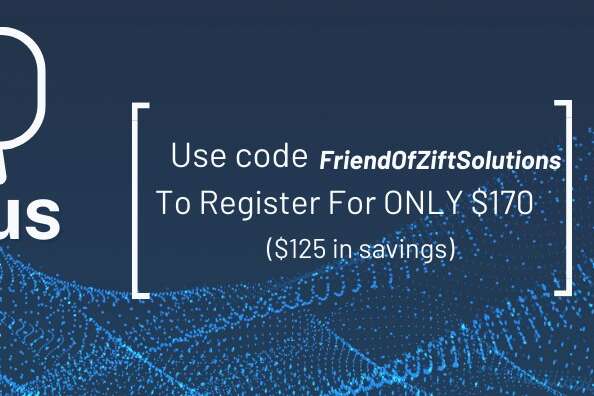Carefully tracking partner program metrics can put immense power in vendors’ hands; by understanding partners’ values and how close they are to closing sales, pipeline transparency opens up. This enables vendors to better support their partners through all stages of the sales journey.
By monitoring five metrics, you can gauge partner performance, increase pipeline awareness, and enable pipeline growth:
- Net New Leads
- New Qualified Opportunities
- Active Pipeline Value
- Closed & Won Opportunities
- Funnel Velocity & Conversion Rates
Partner Program Metric #1: Net New Leads
The universe consists of two groups:
- Those who are your customers
- Those who are not yet your customers
Let’s begin by discussing what your partner’s salesperson needs to know about this second group. Since they’re not yet customers, we need to find leads that can connect us to new customers – net new leads. Where are they?
You may be providing your partners with leads. Leads may arrive in response to ads on their website. Ongoing demand generation programs are designed to bring net new leads on an ongoing basis.
One challenge with net new leads is that there’s no way of knowing how good they are until they are properly pursued. The even bigger problem is getting them properly pursued. Few salespeople like cold calling, and with good reason. Cold calling requires training, coaching, motivation, and encouragement. You can absolutely help your partners with these and earn their appreciation and loyalty in the process.
Tracking Lead Activity
Have you ever asked your salespeople what became of a lead, only to be told, “Well, I left a voicemail”? Unfortunately, a voicemail does not constitute proper follow-up with a lead.
This may be the moment to escalate the situation to a sales manager. This involves tracking each lead and what it turned into, how many leads were converted into customers, and sharing the conversion rate with sales managers. Deciphering whether or not a person is a net new lead doesn’t stop at that decision; it requires follow-through tracking at each step of the process.
Partner Program Metric #2: New Qualified Opportunities
We can consider a lead to be a qualified new opportunity when it meets the following criteria:
- Has the budget been allocated to the opportunity?
- Is the customer prepared to make a buying decision in the near future?
- Is the customer willing to be convinced to buy from our salesperson?
All manner of sales processes have been devised to track the progress of these criteria, but there are really only three states that matter: Unclosed, closed, or lost. When it comes to these states, remember that:
- Unclosed or open opportunities remain on the pipeline.
- Lost opportunities are removed from the pipeline and must be replaced.
- Closed or won opportunities must also be removed from the pipeline and must also be replaced.
Whenever an opportunity is won or lost, our salesperson will have to switch back to seeking mode to find new opportunities to qualify. Until then, they remain in closing mode.
Partner Program Metric #3: Active Pipeline Value
Another variable to keep monitoring is the active pipeline value of each deal, indicating how much revenue and how much gross profit we can expect to generate from each closed opportunity. This may shift several times during the sales process as items are added or removed.
There are many formulae out there for “weighting” the sales pipeline. Some involve estimating the likelihood of closure and multiplying that times the active pipeline value to keep a running total of likely production. Others set up flags to indicate different stages of the sales process and these can be helpful.
At the end of the day the three stages that matter remain the same.
Partner Program Metric #4: Closed & Won Opportunities
Closed and won opportunities are the result we’re after and are always cause for celebration. As a reminder, when we have a closed and won opportunity, or a sale, we must remove that item from the pipeline and replace it. Time to go back to pursuit mode.
Partner Program Metric #5: Funnel Velocity & Conversion Rates
Funnel velocity is just what it sounds like it is: a measure of how fast we can move from the top of the sales funnel to the bottom of the funnel, where we convert leads and opportunities into customers and close them. In other words, Metric #5 is how fast we get from Metric #1 to Metric #4.
It’s important to evaluate funnel velocity in the context of conversion rates, which are closely related to closing ratios. Closing ratios represent the percentage of pursued sales that actually close. Of all the net new leads you pursue, how many are converted into customers? Armed with both our funnel velocity and conversion rates, we can learn much about each salesperson, the sales performance of the partner and, ultimately, our own sales performance.
The easiest way to see the value of these two related metrics is to state them as an answer to the question, “How is our sales performance going?”
“We close 20% of the opportunities we pursue, and on average we get them closed within a month.”
It’s important to note here that your evaluation of that performance is completely relative to your past performance. That is, the important thing is to keep on improving. The next time you measure, in the following month, quarter, or year, you should decide how much you want to increase that 20% and work to achieve that. And you should work to reduce the time it takes by increasing your funnel velocity. You are always competing against your own previous performance.
Increasing Funnel Velocity and Conversion Rates
There are many ways to increase funnel velocity, but all are grounded in staying on top of follow-up. For every marketing and sales activity there must be a planned next step, and the execution of that next step must be confirmed on time. Every contact moves you further down the funnel or out of it. Remember, if 20% convert, 80% do not, so the sooner you determine whether or not a given target will ever close the better. Remove them from your funnel and save yourself time to use elsewhere. Some great funnel velocity increasing activities include:
- Content marketing. Keep showing them how knowledgeable your team is by sharing their insight and observations.
- Multi-media messaging. Don’t depend on emails alone. Call. Text. Try direct USPS mail! Social media messaging. You have many weapons available to you to contact prospective customers.
- Share case studies. Perhaps the most credible channel marketing you can share are stories about other customers and the value they enjoyed from your offerings. “If they received this return on investment and these benefits, so will you!”
- Nurture your targets. Send them high-value information to help them make their buying decision faster. Show your concern for them to receive great value from your offerings.
- Attention grabbers. Appropriate premium items capture attention and get your prospects feeling that they have received something from you. Many will remember that it is more blessed to give than to receive and may feel more compelled to return the favor.
This is a great language to speak when you’re figuring out how to recruit channel partners. When everyone else is pounding partners over the head to fill their pipelines and increase their sales, you coming in with effective strategies to actually accomplish that will be a welcome change.
The more of these tactics you can provide support for, the better your channel partner engagement will be – and the more partner mindshare you’ll earn. Keep reminding partners that customers appreciate those who follow-up effectively and on time. The more compelling reasons to buy you provide, the faster your funnel velocity will become, and the higher your conversion rates will be!
Kelsey Worsham
Kelsey is the Senior Content Marketing and Communications Manager at Zift Solutions.



